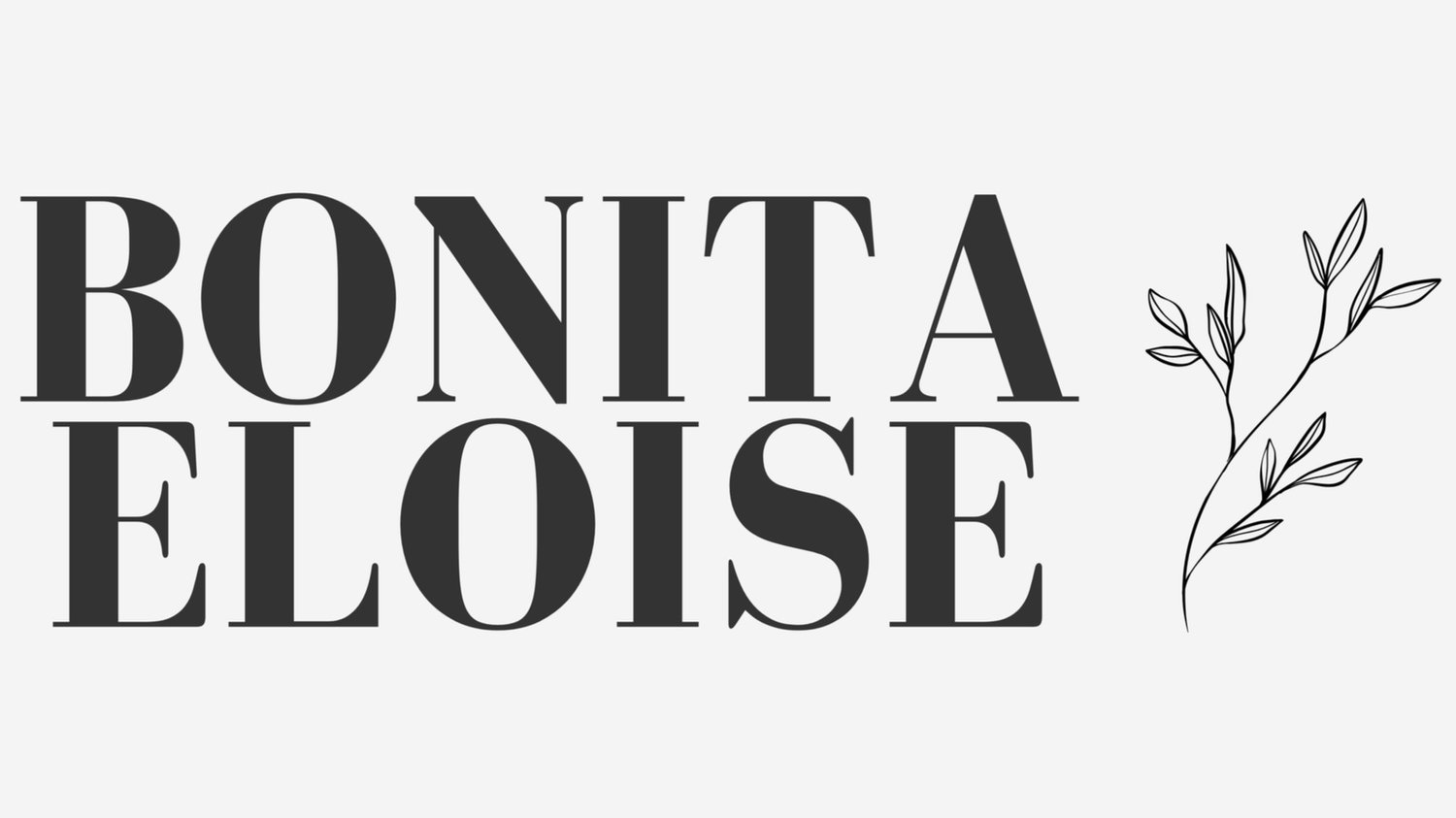Bonita Eloise Care Guide
At Bonita Eloise, every piece in our collection carries a story, some spanning over a century. These carefully curated vintage treasures have been given new life, and with that comes the privilege and responsibility to treat them with the care and respect they deserve. This comprehensive guide will help you preserve the beauty, functionality, and legacy of your Bonita Eloise pieces across all our collections.
Understanding Your Vintage Treasures
Each item in our collections is unique, one-of-a-kind, and often decades or even centuries old. These pieces have survived through time, carrying with them the patina of history and the charm of their past lives. While we carefully select and prepare each item, vintage pieces require thoughtful care to ensure they continue to bring joy and beauty to your home for years to come. The small imperfections you may notice such as a gentle fade in colour, a subtle crack that tells a story, or the soft wear of countless gentle hands, are not flaws but rather the authentic marks of time that make each piece irreplaceable. These characteristics are part of what makes your Bonita Eloise piece truly special and entirely yours.
Heirloom Collection
Plates, Serving Trays, Picture Frames, Mirrors, Decorative Bowls & Ornaments
Daily Care:
• Handle with clean, dry hands
Cleaning:
• Hand wash only with lukewarm water and mild soap
• Use soft cloth or sponge
• For gold accents: be extra gentle, avoid harsh cleaners
• Mirrors: clean with equal parts white vinegar and distilled water or other solutions suitable for mirrors
• Dry immediately with soft cloth
Storage:
• Store plates vertically with plate stands
• If stacking, use felt pads between pieces
• Keep away from direct sunlight and extreme temperature changes
Reverie Collection
Vintage Books, Children's Toys, Games, Collectible Items & Curiosities
Books:
• Store upright, not too tightly packed
• Support when opening, never force spine flat
• Dust regularly with soft brush (spine to edge)
• Keep at 60-70°F with 45-55% humidity. Especially for rare books
Toys & Games:
• Inspect for safety before use (loose parts, sharp edges)
• Clean based on material: wood, metal, or fabric
• For moving parts: gentle operation prevents seizing
• Store valuable pieces as display items
Storage:
• Consistent temperature and humidity
• Away from direct sunlight
• Document history and care requirements
Adorn Collection
Brooches, Necklaces, Earrings, Bracelets, Rings, Cufflinks & Hair Accessories
Daily Care:
• Put on jewellery after applying cosmetics and perfume
• Clean after each wear with soft cloth
• Inspect clasps and settings before wearing
Cleaning:
• Lukewarm water and mild soap
• Soft toothbrush for crevices
• Silver polish for sterling silver (avoid stones/pearls)
• Professional cleaning annually for valuable pieces
Storage:
• Store each piece separately in soft pouches
• Never store different metals together
• Keep in cool, dry place away from humidity
• Use anti-tarnish strips for silver
Nomad Collection
Travel Memorabilia, Unusual Objects, Eclectic Finds & Conversation Pieces
General Care:
• Assess materials before cleaning (wood, metal, fabric, etc.)
• Start with gentle dusting using soft brush
• Test any cleaning method on hidden area first
Paper Items (postcards, maps, tickets):
• Handle with clean hands or cotton gloves
• Store flat in acid-free folders
• Keep away from light and humidity
• Never clean with water
Mixed Materials:
• Clean the most delicate component first
• Never force moving parts that have become stiff
• Preserve the patina and avoid over-cleaning
Lumière Collection
Candle Holders, Crystal Bowls, Decanters, Vases, Champagne Flutes & Wine Glasses
Crystal & Fine Glass:
• Hand wash individually in lukewarm water
• Never use dishwasher
• For cloudiness: soak in : vinegar-water solution
• Dry immediately with lint-free cloth
• Store pieces so they don't touch each other
Candle Holders:
• Remove wax by freezing, then gently chipping away
• For stubborn wax: use hair dryer on low heat
• Polish metal components with appropriate polish
• Check stability before use
Decanters:
• Clean interior with rice and warm soapy water
• Store stoppers slightly loose to prevent sticking
• Keep completely dry to prevent mineral deposits
Sanctuary Collection
Vases, Planters, Bowls, Jugs, Pitchers & Storage Containers
Before Use:
• Inspect for cracks or damage before each use
• Test water-tightness if using with liquids
• Don’t overfill storage pieces
Plant Care:
• Ensure proper drainage (use inner pots if needed)
• Choose appropriate plants for container size
• Bring indoors during extreme weather as vintage ceramics aren't always frost-proof
• Clean thoroughly when repotting
Functional Use:
• Clean after each use
• Remove mineral deposits and stains promptly
• Store contents that won't damage the interior of the item
Disclaimer:
Vintage items may be more delicate than modern pieces. These guidelines represent best practices, but individual pieces may need specialised care. When in doubt, consult professional conservators. Bonita Eloise cannot be held responsible for damage arising from weather conditions or improper care. Always prioritise safety, especially with items used around food or children. By caring for these pieces, you're continuing their story and ensuring their beauty can be appreciated for generations to come.
